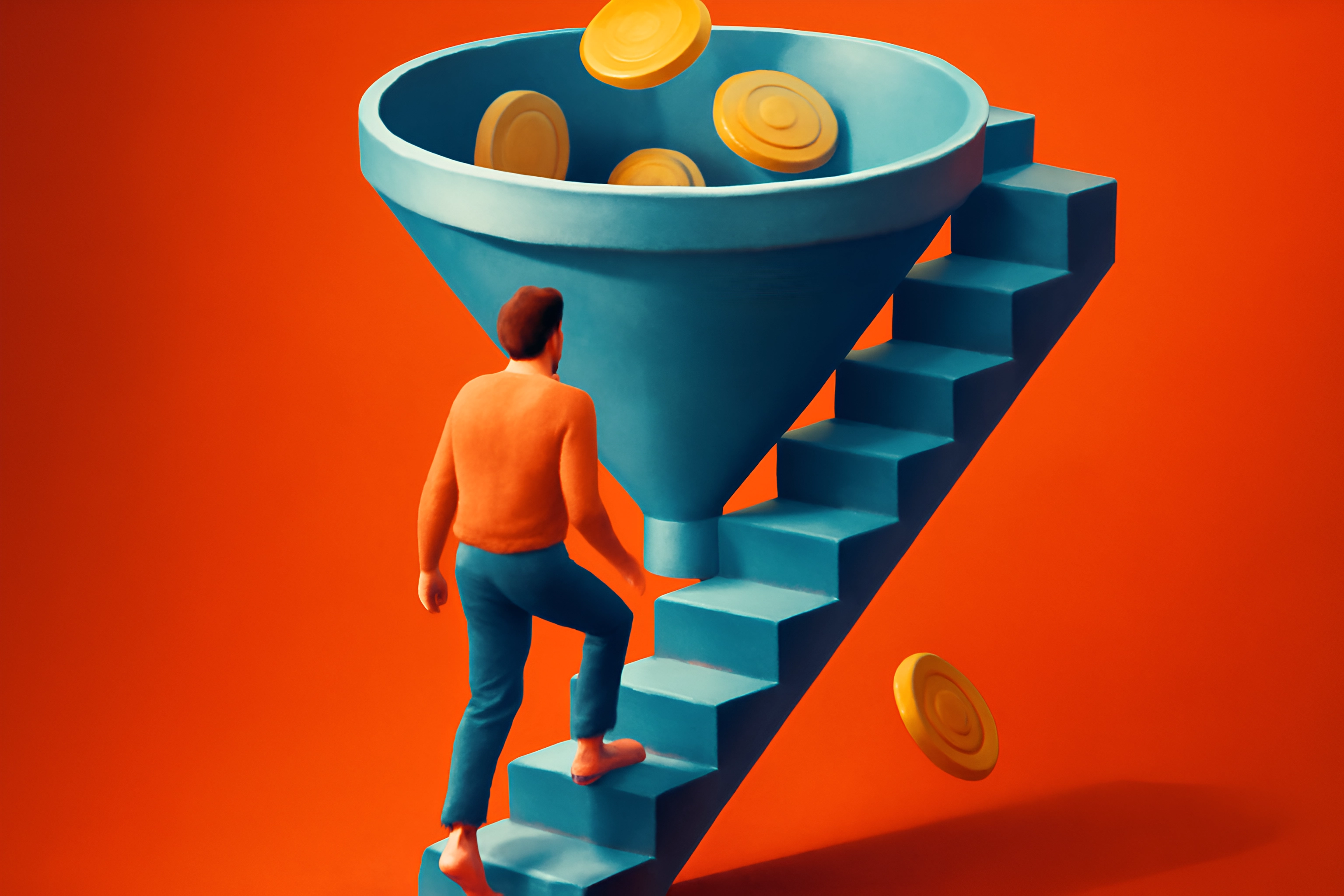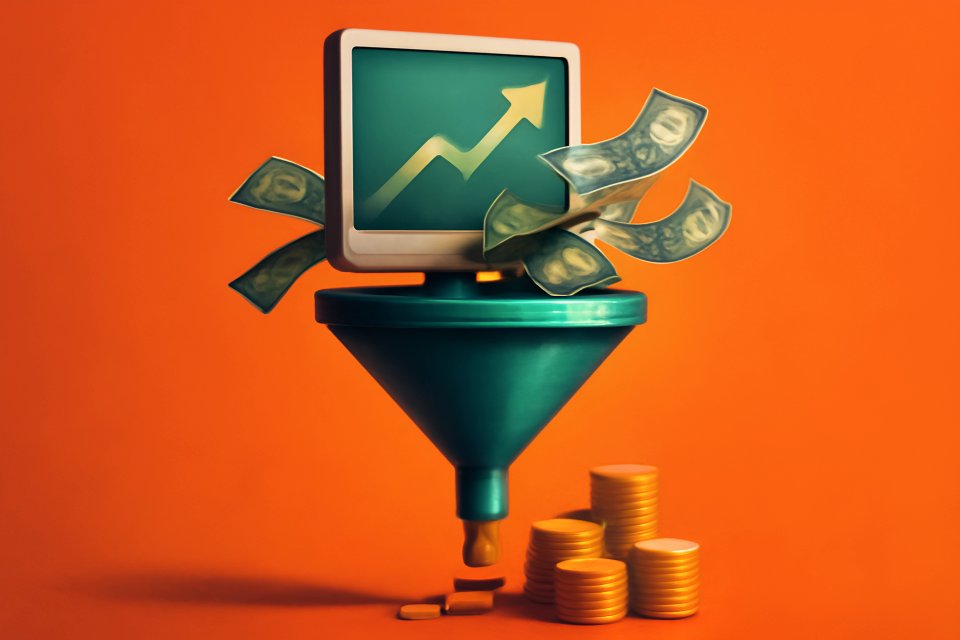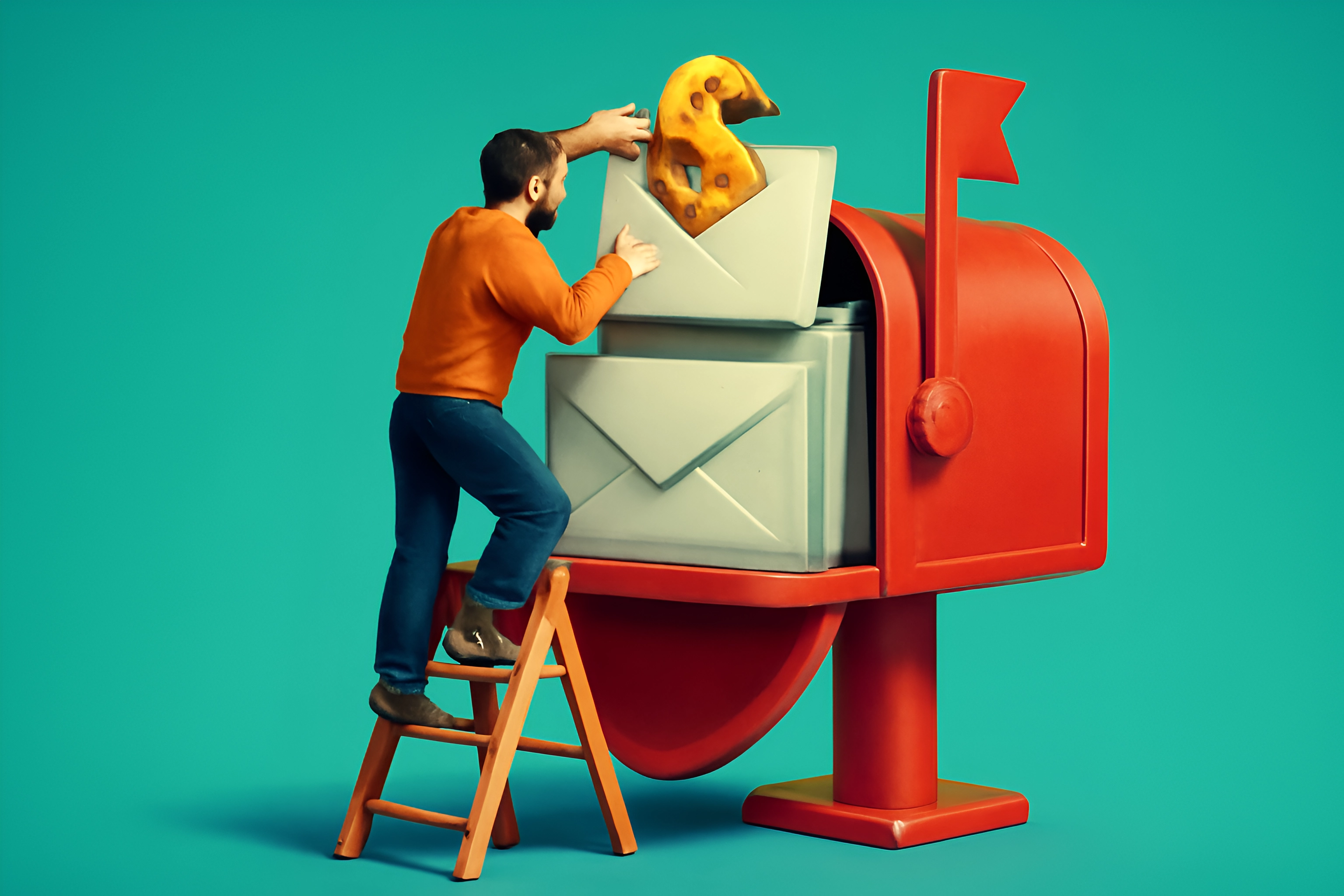
Are you tired of shouting into the void? You share affiliate links on your blog or social media, pouring your energy into posts, only to be met with… crickets. You’re not alone. This “post and pray” method is precisely why most beginners burn out and give up on affiliate marketing before they ever see a real, meaningful paycheck. It’s a path paved with frustration and wasted effort.
But what if there was a better way? A smarter way. The secret isn’t about shouting louder; it’s about building a guided path that turns casual visitors into loyal customers. This system is called an affiliate marketing funnel, and it’s the single biggest differentiator between struggling amateurs and six-figure earners. It’s the engine that works for you 24/7, building trust and driving sales on autopilot.
In this no-fluff guide, you’re about to get the complete blueprint. We will walk you through, step-by-step, how to build your very first profitable affiliate marketing funnel from the ground up. Even if you have zero technical experience and the thought of “building” anything online makes you sweat, you will leave here with a clear, actionable plan to start earning smarter, not harder.
What Exactly is an Affiliate Marketing Funnel?
Let’s cut through the jargon. An affiliate marketing funnel is simply an automated system you create to guide a potential customer from their first point of contact with you all the way to purchasing a product through your affiliate link. It’s a strategic journey, not a random shot in the dark. Think of it as the difference between being a pushy salesperson and a trusted guide.
Imagine a helpful employee in a high-end store. They don’t just point at a product from across the room and yell, “Buy this!” Instead, they greet you, ask about the problem you’re trying to solve, listen intently, and then lead you to the perfect solution that meets your needs. That’s what a funnel does. It contrasts sharply with the common mistake of just dropping a raw affiliate link, which is like that lazy employee pointing from afar—it rarely works and often annoys the customer.
The funnel method transforms the entire process. Instead of Traffic -> Affiliate Link -> Low/No Conversion, you create a system that looks like this: Traffic -> Landing Page -> Email List -> Trust-Building -> Affiliate Offer -> Higher Conversion. This isn't just about making a single sale; it's about building a sustainable business asset. You are creating a predictable, repeatable process for generating income.
The Core Benefits: Why a Funnel is Your Secret Weapon
So, why go to the trouble of building this system? Because the benefits fundamentally change your potential for success and give you a powerful, long-term advantage. This isn’t just a tactic; it’s a strategy for building a real business that gives you security and control over your income.
First and foremost, a funnel allows you to build your own asset: an email list. Your social media followers belong to the platform, but your email list belongs to you. It’s a direct line of communication to your most engaged audience members, an asset you can leverage for years to come. According to HubSpot, a staggering 96% of visitors to your website aren’t ready to buy on their first visit. A funnel captures their interest so you can build the trust necessary to make a sale later.
Beyond owning your audience, a funnel positions you as a trusted authority. By providing immense value before ever asking for a sale, you shift the dynamic from a random person hawking a product to a respected advisor offering a genuine solution. This trust is what drives conversions through the roof. Furthermore, once someone is on your list, you can introduce them to other relevant affiliate offers over time, dramatically increasing the lifetime value of each subscriber. In fact, data shows that funnels using segmented email lists can improve repeat purchases by 30%, proving that a targeted approach pays dividends.
The 4 Core Stages of a Beginner-Friendly Affiliate Funnel
The Anatomy of a Profitable Funnel
To build an effective funnel, you first need to understand its structure. Don't let the term "funnel" intimidate you; it's just a simple, four-stage journey you create for your audience. Each stage has a specific purpose designed to move a person closer to becoming a happy customer who trusts your recommendations.
Think of it as a logical progression. You can't ask someone to buy a product before they are even aware a problem exists or that you have a solution. This journey takes them from being a complete stranger to a loyal fan, ready to act on your advice.
Let's break down these four essential stages.
Stage 1: Traffic (Awareness)
This is the top of your funnel, where it all begins. Traffic is simply the people you attract to your system. These are potential customers who are discovering you for the first time, likely because they were searching for a solution to a problem they have.
This audience can come from anywhere you create content. It could be from a search-optimized blog post, a helpful YouTube video, a viral TikTok clip, an eye-catching Pinterest pin, or an engaging post in a Facebook group. The key at this stage is to capture their attention by addressing a pain point they are actively experiencing.
Your goal here isn't to sell anything. It's purely to make them aware that you exist and have valuable information to share. This is your first handshake, your initial introduction to the people you want to help.
Stage 2: Lead Magnet & Landing Page (Interest)
Once you have someone's attention, you need to capture their interest and get their permission to contact them again. This is where the "value exchange" happens. You offer a free, high-value piece of content—known as a lead magnet—in exchange for their email address.
This transaction takes place on a simple, dedicated webpage called a landing page (or squeeze page). The lead magnet must be something your audience desperately wants, something that offers a quick win or a piece of the solution to their problem. It could be a checklist, a template, a short eBook, or a 5-day email course.
By giving you their email, a person transitions from a passive visitor into an active lead. They have raised their hand and said, "Yes, I'm interested in what you have to say." This is a critical step in building a relationship.
Stage 3: Email Nurture Sequence (Desire)
Now that you have a lead, you can't just immediately pitch your affiliate product. That would be like asking for marriage on the first date. The purpose of the email nurture sequence is to build a relationship, foster trust, and create desire for the solution you will eventually offer.
This is typically a series of 3-5 automated emails sent over several days. In these emails, you deliver on the promise of your lead magnet, share more valuable tips, tell relatable stories, and empathize with their struggles. You are proving that you understand their problem on a deep level.
Each email should provide value and strengthen your connection with the subscriber. By the end of this sequence, your lead should not only trust you but also have a burning desire for a complete solution to their problem—a solution you are about to present.
Stage 4: The Affiliate Offer (Action)
This is the final stage of the funnel, where you guide your now-warmed-up lead to take action. After building trust and demonstrating your expertise, you can confidently introduce the affiliate product as the ultimate solution to their problem. This is the moment where your hard work pays off.
The introduction of the offer should feel natural and helpful, not forced or salesy. You frame it as the logical next step in their journey. You explain exactly how the product solves their core problem and why you personally recommend it, perhaps sharing your own success story with it.
Because you've taken the time to build rapport and provide value, your recommendation carries immense weight. The lead is far more likely to click your affiliate link and make a purchase because they see you as a trusted advisor, not a random advertiser. This is how you generate consistent, predictable affiliate commissions.
How to Build Your First Affiliate Funnel: The 5-Step Blueprint
Your Step-by-Step Guide to an Effective Affiliate Funnel Setup
Ready to build? This is where the theory becomes reality. Follow these five steps to assemble your first income-generating machine. We’ll keep it simple, actionable, and focused on getting you results without the overwhelm.
Step 1: Choose a High-Quality Affiliate Product to Promote
This first step is the foundation of your entire funnel. Choosing the wrong product is like building a house on sand; it’s destined to collapse. Your goal is not to find the product with the highest commission but the one that provides the most genuine value to your specific audience.
Your credibility is on the line with every recommendation you make. The best approach is to choose a product you have personally used and achieved results with. This allows you to speak from a place of authentic experience. As experts at Rewardful advise, you should always promote products you have personally vetted to maintain trust. If you haven't used it, how can you truly stand behind it?
TheEarnist Tip: "Your reputation is your most valuable asset. Promoting a product you don't believe in is the fastest way to lose trust and destroy your long-term earning potential. Always prioritize your audience's needs over a potential commission."
Step 2: Create a "Can't-Resist" Lead Magnet
Your lead magnet is the irresistible bribe that convinces someone to join your email list. To be effective, it must be directly related to the problem that your chosen affiliate product solves. It should act as a "first step" or a "quick win" on the path to the larger solution.
Brainstorm a free resource that your ideal customer would find incredibly useful. Excellent options include a downloadable checklist, a printable template, a resource library of helpful tools, a short eBook, or a multi-day email course. For inspiration, you can explore dozens of powerful lead magnet examples to see what works across different industries. The key is specificity; a guide titled "5 Mistakes to Avoid When Starting a Keto Diet" is far more compelling than a generic "Guide to Health."
TheEarnist Tip: "Your lead magnet should provide a 'quick win.' If it helps someone solve a small part of their problem immediately, they'll trust you to help them with the bigger solution (your affiliate offer). Make it instantly valuable and easy to consume."
Step 3: Build a Simple, High-Converting Landing Page
Your landing page has one job and one job only: to convince visitors to exchange their email address for your lead magnet. Simplicity is your best friend here. Avoid clutter, navigation menus, or anything else that could distract from the primary goal.
A high-converting landing page needs just a few key elements. First, a powerful, benefit-driven headline that grabs attention. Second, a few bullet points that explain what they'll get and how it will help them. Third, a visual of the lead magnet (like a mockup of the eBook cover). And finally, a simple opt-in form asking for their name and email address, with a clear call-to-action button like "Send Me the Guide!"
You don't need to be a web designer to create one. Beginner-friendly tools like MailerLite, ConvertKit, or all-in-one platforms like Systeme.io make it easy with drag-and-drop templates. These tools are designed to help you create what are often called squeeze pages or bridge pages that effectively pre-sell your audience before they see an offer.
Step 4: Write Your 3-Day Nurture & Sales Email Sequence
This is where the relationship is built. Once someone signs up, your automated email sequence kicks in. For a beginner funnel, a simple 3-day sequence is perfect. You can find excellent email sequence examples and templates to use as a starting point.
Here is a simple, effective structure:
- Email 1 (Day 1): Deliver the Goods & Welcome. The subject line should be clear, like "Here's your [Lead Magnet Name]!" In the email, deliver the freebie, briefly introduce yourself, and tell them what to expect in the next couple of days.
- Email 2 (Day 2): Provide More Value. Share a powerful story or a valuable tip related to their problem. This email is purely about building rapport and trust. Don't sell anything; just be helpful.
- Email 3 (Day 3): The Gentle Pitch. Connect the dots between the problem they have, the value you've provided, and the ultimate solution—your affiliate product. Explain why you recommend it and include your affiliate link.
TheEarnist Tip: "Write like you're talking to a friend over coffee. Use a conversational tone, share personal experiences, and focus on being genuinely helpful. The sale will feel like a natural, welcome next step, not a pushy pitch."
Step 5: Drive Targeted Traffic to Your Landing Page
Your funnel is built. Now, you need to get people into it. The key is to focus on driving targeted traffic—people who are actually interested in the problem your funnel solves. Don't just spam your link everywhere.
Choose one or two beginner-friendly traffic strategies and focus on mastering them. A great place to start is with content marketing. You can build a niche audience with smart content creation by writing a detailed blog post that is optimized for a specific keyword related to your topic, then place links to your landing page throughout the article.
Another powerful method is social media. You can learn how to leverage social media for affiliate marketing by creating valuable content on platforms like Pinterest, Instagram, or TikTok that naturally leads people to want your free lead magnet. The goal is to attract, not chase.
TheEarnist Tip: "Don't try to be everywhere at once. That's a recipe for burnout. Pick ONE traffic source you enjoy and master it before adding another. Consistency on one platform will always beat inconsistency on five."
Beyond the Build: Simple Ways to Optimize Your Funnel
Measuring What Matters: Are People Moving Through Your Funnel?
Building your funnel is a massive accomplishment, but the work doesn't stop there. To create a truly passive income machine, you need to know if it's working effectively. Don't get overwhelmed by analytics; you only need to watch three key metrics to understand your funnel's health.
First is your Landing Page Conversion Rate. This tells you what percentage of visitors are signing up for your lead magnet. Second is your Email Open Rate, which shows if your subject lines are compelling enough to get people to open your emails. Third is your Email Click-Through Rate, which measures how many subscribers are clicking the links inside your emails, especially your affiliate link.
Being aware of these numbers allows you to make small, data-driven tweaks that can lead to huge improvements in your earnings. For instance, UserMaven highlights that a simple tactic like A/B testing different email subject lines can significantly boost your open rates. Once you have this data, you can use innovative affiliate marketing techniques to refine your approach and maximize your revenue.
Conclusion: Start Building Your Income Engine Today
You now have the complete blueprint. An affiliate marketing funnel is what transforms you from a hopeful link-sharer into a strategic business builder. It’s a system that works for you around the clock, building the trust and authority needed to generate a reliable, sustainable income. It’s your 24/7 salesperson, your automated relationship-builder, and your ticket to financial security.
Building your first funnel is a monumental step toward creating the freedom you deserve. This is a learnable skill, not some secret magic reserved for the gurus. It takes effort upfront, but the payoff is an asset that can pay you for years to come. Start with step one, be patient with the process, and trust that you are building something real and valuable. You can see exactly how these strategies work in the real world by checking out this step-by-step affiliate marketing case study.
The path is clear. You have the knowledge and the plan. The only thing left to do is take action. This is one of the most powerful low-cost side hustles you can start today.
What's the first affiliate product you're thinking of building a funnel for? Share your idea in the comments below—let's build these income engines together.














